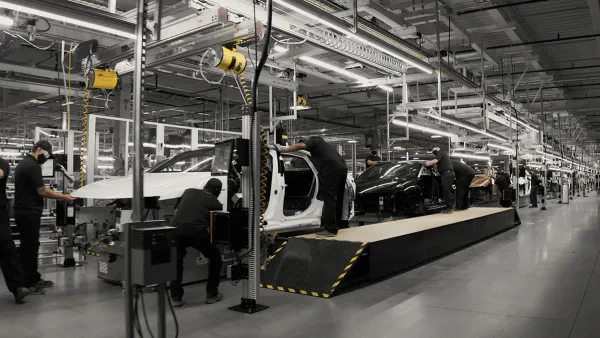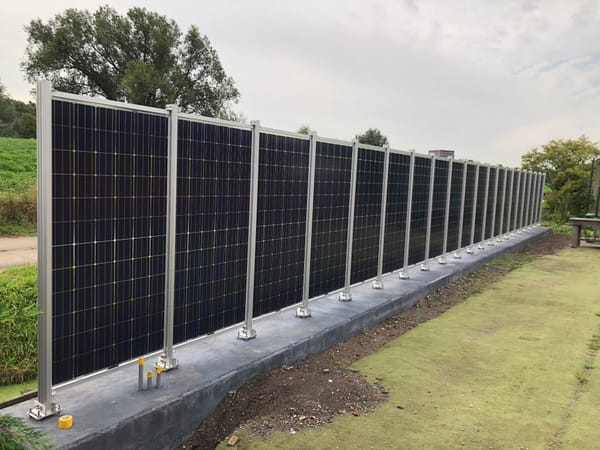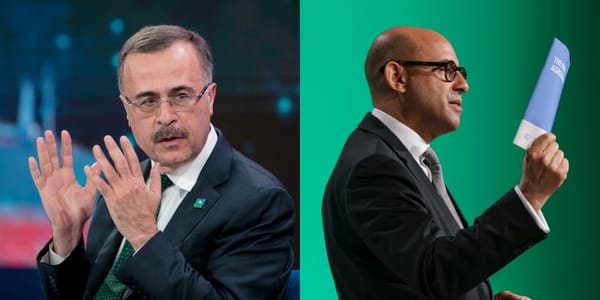Middle East countries are meeting on climate. What outcomes could they want?
Good Afternoon!
Today, I’m trying out a new format as we get closer to Dubai. I’m working to put information into a more digestible form. Also, if you want to see more of this kind of reporting, please consider supporting my Kickstarter to send me to Dubai this December and get daily reports on the global climate negotiations. Your support makes all this happen!
-Mike
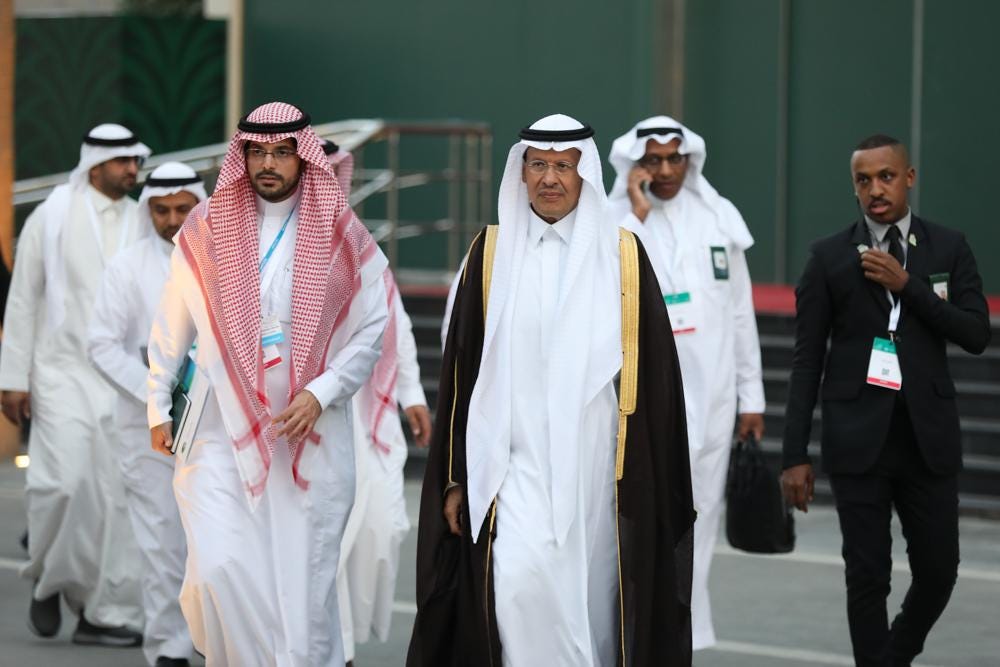
This week the Middle East and North Africa Climate Summit got underway in Riyadh, Saudi Arabia. Running from Sunday, October 8 to Thursday, October 12, the Summit is one of four regional summits operated by the U.N. as part of a run up to the two week global climate negotiations, COP28, in Dubai, UAE this December. The region has had a higher level of interest in climate negotiations than in the past, since Egypt hosted COP27 last year, and UAE will host COP28 this year.
What is happening?
In an effort to prime the pump of negotiations before COP28, the U.N. sponsors a series of meetings in advance. The regional climate summits are a mixture of actual country-to-country meetings, but largely a series of panel discussions and talks by various climate experts and ministerial leaders from each country. Meanwhile, advocacy groups host side events – panel discussions and speakers of their own – to emphasize and illustrate their positions.
While everyone hopes to edify attendees through their speaking events, the real action is, like most conferences, in the hallways, as advocates and negotiators from various countries and groups hope to see (or avoid) one another to convince them to take various positions in advance of the COP28 meeting. Here’s a schedule.
Who is there?
Unlike the African Climate Summit held in Nairobi, Kenya last month, the MENA Summit has not attracted many heads of state, and instead has been limited to ministerial level discussions. Representatives from Morocco to Iraq are attending, including finance and energy ministers from many of those countries.
What are the politics?
I say: Middle East; You say: Oil. That is the long and the short of it. From Iraq to Algeria, the Middle East and North Africa are home to some of the biggest oil and gas producing countries in the world. The biggest oil and gas producers, like Saudi Arabia, also have huge investment funds they deploy to influence global policy.
These countries’ main interest is to keep oil and gas glowing as long as possible, so they can continue to make piles of money. Meanwhile, the oil producers are pushing the idea of funding carbon capture to defray the use of fossil fuels. Also, the oil producers’ investment funds are major sponsors of carbon credit trading. For instance, the UAE recently positioned itself as a major buyer of African carbon credits.
On the flip side, countries like Iraq and Libya are now experiencing intensified disasters directly attributable to climate change. This summer Iraq experienced record heat and large fish kills due to the Tigris River drying up. Libya is still cleaning up from record floods that killed over 5,000 people following unprecedented rain storms.
The internal politics of these countries – who are also major oil producers – are contradictory on climate. On the one hand, they have become dependant on oil revenue. Outside of Saudi Arabia and a couple of small Gulf states, most oil producing country leaders have no real “post-fossil fuel era” plan. So, while they don’t want more climate disasters, their economies without oil would create a different kind of disaster.
What everyone agrees on, however, is there needs to be more spending on “climate adaptation”, which means everything from higher sea walls, architecture that creates more shade, and paying farmers to grow drought resistant crops.
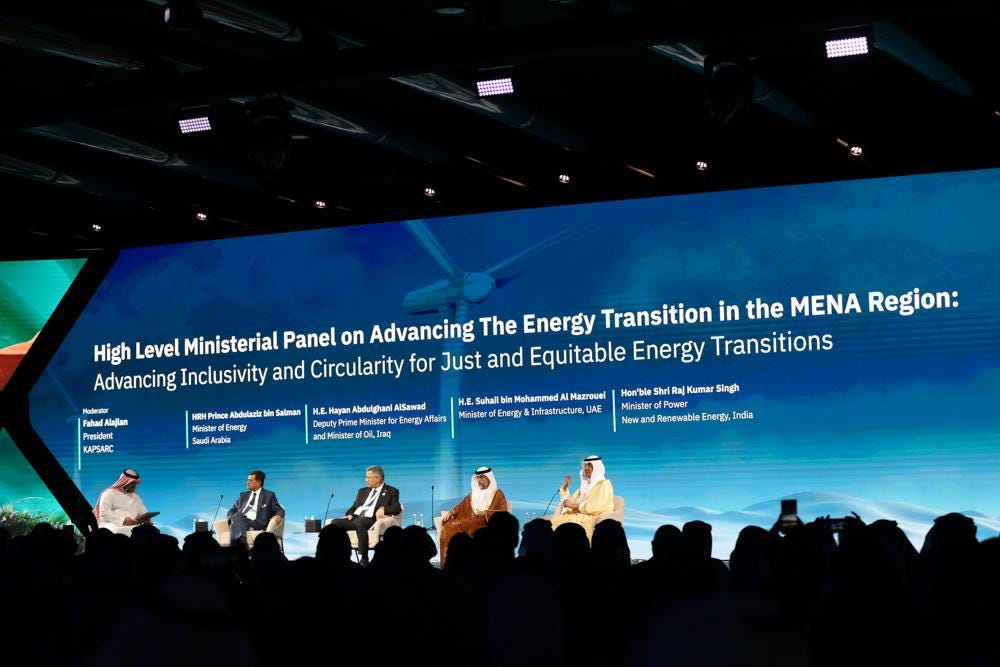
What are the potential outcomes?
Not so long ago, oil producing nations denied the existence of climate change. Now those countries are working on a delaying action to decarbonization and a transition to a green economy. Thus, the outcomes we should expect from the MENA meeting include:
- Denial of a need for, or just plan obfuscation of setting a fossil fuel halt date;
- Support for the idea of carbon capture and sequestration as a solution to lowering global carbon emissions;
- Support for financing and regulation of carbon trading systems;
- Calls for Western payments into the climate “Loss and Damage Fund”, which is meant to support developing countries that experience climate disasters; and
- Calls for increased Western nation foreign aid to assist with green energy transitions.
As with most international meetings, the MENA Climate Summit will likely issue a communique expressing the consensus of the attending countries at the end of the meeting on Thursday. I’ll review it in Friday’s newsletter.
Other Things Happened
- A major study published this week suggested that parts of the world may become too hot for humans to live. Among those places: Northern China, parts of the Middle East and Iran, Northern India, and Sub Saharan Africa.
- Here’s a map of where it was hottest this summer.
- Mexico City’s mayor, Claudia Sheinbaum, is a Ph.D. in energy engineering and a climate expert. She’s also running for president of Mexico.
You made it to the bottom of the newsletter! I’m fleeing from Twitter. Find me on Bluesky and Threads.



